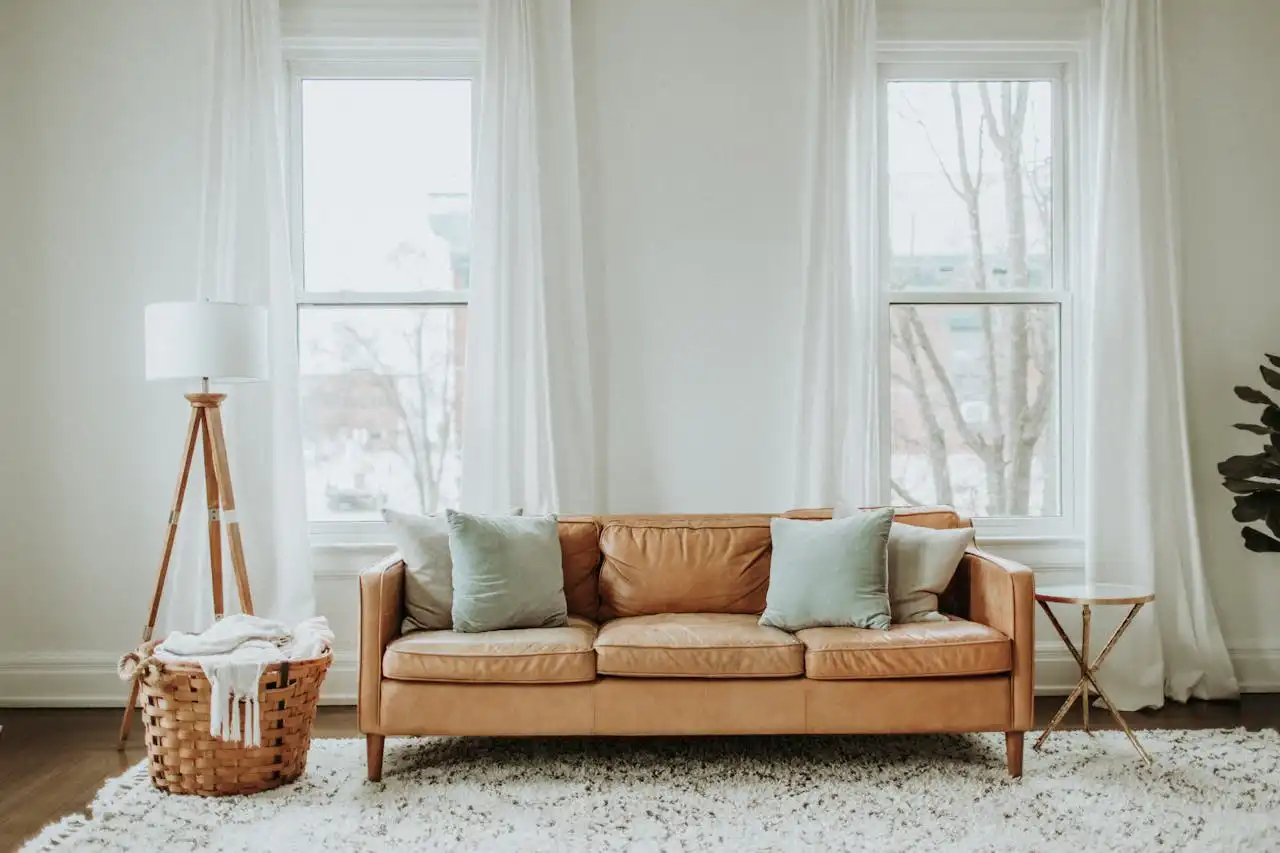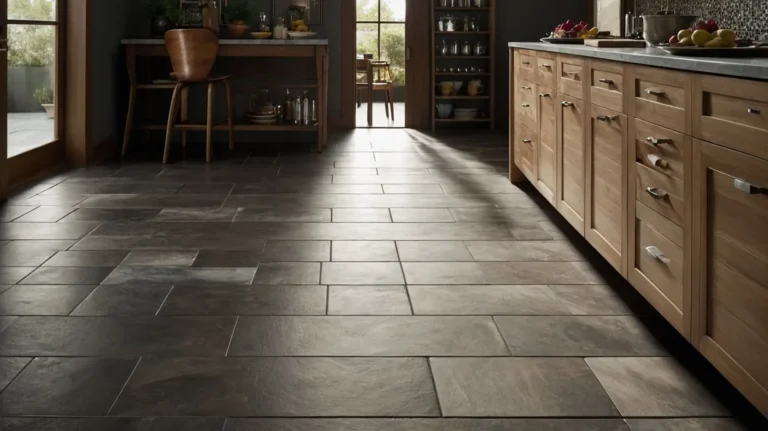How to Choose the Right Rug Size for Every Room
You walk into a beautifully decorated room, and something feels off. The furniture looks great, the colors work perfectly, but the space lacks harmony.
Often, the culprit is a poorly sized rug that throws off the entire room’s balance and flow.
Understanding Rug Sizing Fundamentals
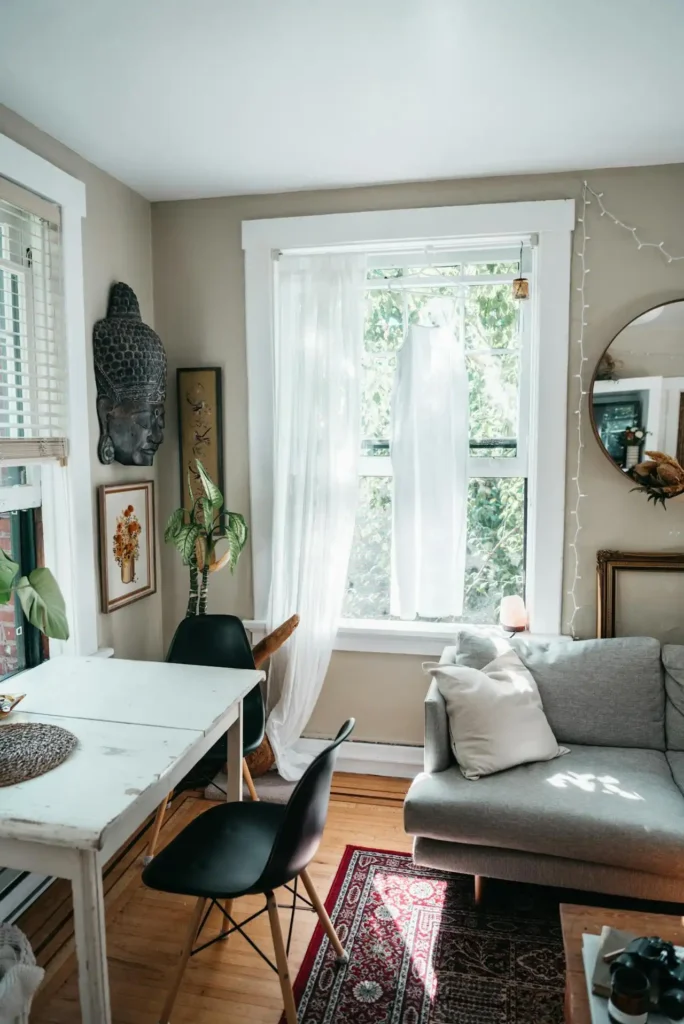
Before you dive into specific room requirements, you need to grasp the basic principles that guide rug selection. Size directly impacts how your space feels and functions.
A properly sized rug creates visual cohesion by anchoring your furniture arrangement.
It defines conversation areas, adds warmth underfoot, and helps establish the room’s focal point. When you choose the wrong size, your room can feel disjointed or cramped.
The golden rule revolves around proportion and purpose. Your rug should complement your furniture arrangement rather than compete with it.
Think of it as the foundation that ties all your design elements together. Most interior designers follow the “furniture on or off” principle.
You either place all major furniture pieces on the rug or keep them all off, with only the front legs touching the rug’s edge.
Living Room Rug Sizing Made Simple
Your living room serves as the heart of your home, so getting the rug size right here makes a significant impact.
The standard approach involves creating a cohesive seating arrangement that feels intentional and inviting.
For smaller living rooms, choose a 5×8 or 6×9 rug that allows all front furniture legs to rest on the rug.
This approach creates the illusion of more space while maintaining visual connection between seating pieces.
Medium-sized living rooms work best with 8×10 rugs. This size typically accommodates all furniture legs on the rug, creating a unified conversation area.
You want at least 18 inches of bare floor around the rug’s perimeter to maintain proper proportion.
Large living rooms call for 9×12 or even larger rugs. Go bold with size to match the room’s scale and create a grand, luxurious feeling.
In spacious areas, small rugs look lost and can make your furniture arrangement feel scattered.
Bedroom Rug Placement Strategies
Your bedroom rug serves both practical and aesthetic purposes. It provides warmth when you step out of bed and softens the room’s overall appearance.
For master bedrooms, place a large 8×10 or 9×12 rug under the bed, extending at least 24 inches beyond the foot of the bed and 18 inches on each side.
This creates a luxurious border that frames your sleeping area beautifully. Smaller bedrooms benefit from 5×8 rugs positioned at the foot of the bed.
This placement adds comfort without overwhelming the space. Make sure the rug extends equally on both sides of the bed for balanced visual appeal.
Twin or full-size beds work well with runner rugs placed alongside the bed. Choose runners that span most of the bed’s length, providing a soft landing spot for your feet each morning.
Consider layering smaller accent rugs in seating areas within your bedroom. A small 3×5 rug under a reading chair creates a cozy nook while adding texture and color to your space.
Dining Room Guidelines for Perfect Proportions
Dining room rugs require careful consideration of both aesthetics and functionality. You need enough space for chairs to slide in and out comfortably without catching on the rug’s edge.
Measure your dining table and add 48 inches to both length and width. For standard six-person dining tables, choose at least an 8×10 rug.
This extra space ensures chairs remain on the rug even when pulled out for seating. This prevents the awkward situation of chair legs catching on the rug’s border.
Round dining tables pair beautifully with round rugs, while rectangular tables work best with rectangular rugs.
However, you can successfully use a round rug under a rectangular table if the proportions work well together.
Larger tables accommodating eight or more people require 9×12 or larger rugs to maintain proper proportions and functionality.
Consider the room’s traffic flow when positioning your dining room rug. You want easy movement around the dining area without tripping hazards or awkward navigation paths.
Kitchen and Hallway Considerations
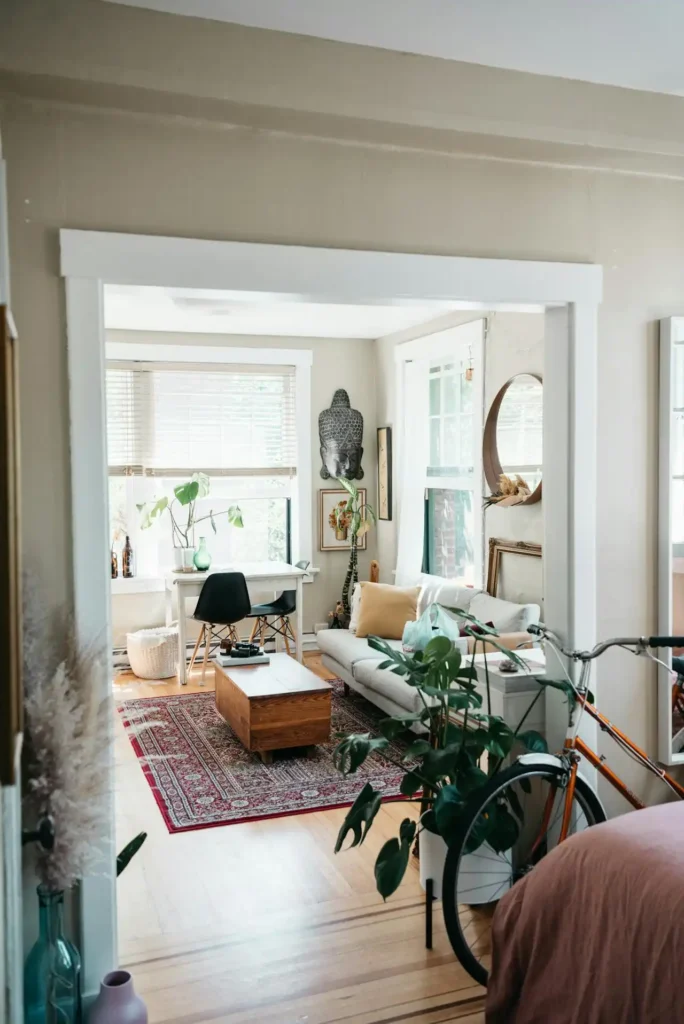
Kitchen rugs serve primarily functional purposes while adding warmth and style to these hard-working spaces. Focus on practicality without sacrificing visual appeal.
In galley kitchens, choose long runners that span most of the walkway length. This ensures comfort and prevents the rug from looking undersized.
Standard widths of 2 to 3 feet work well, providing comfort underfoot without impeding movement or cabinet access.
L-shaped kitchens benefit from strategically placed smaller rugs in key work areas. Position 3×5 rugs in front of the sink, stove, or main prep area where you spend the most time standing.
Kitchen islands require special consideration. Choose rugs that extend at least 12 inches beyond the island on all sides where people will stand.
Hallways need runners that leave 4-6 inches of bare floor on each side. This proportion creates visual balance while ensuring the runner doesn’t overwhelm the narrow space.
Common Rug Sizing Mistakes to Avoid
Many homeowners make predictable mistakes when selecting rug sizes. Learning to recognize these pitfalls helps you make better choices for your space.
Choosing too small a rug ranks as the most common error. Small rugs make rooms feel choppy and disjointed.
When in doubt, size up rather than down for a more sophisticated appearance. Massive furniture requires substantial rugs to maintain visual balance.
Ignoring furniture proportions leads to awkward arrangements. Your rug should complement your furniture scale, not compete with it.
Forgetting about traffic patterns creates functional problems. Overlooking room architecture is another frequent mistake.
Consider how people move through your space and ensure your rug placement doesn’t impede natural flow or create tripping hazards.
Work with your room’s proportions, ceiling height, and architectural features rather than against them when selecting rug sizes.
Measuring and Planning Tips
Accurate measurements form the foundation of successful rug selection. Take time to measure properly before making any purchasing decisions.
Use painter’s tape to outline potential rug sizes on your floor. Consider your furniture arrangement flexibility.
This visualization technique helps you see how different sizes will look and feel in your actual space before committing to a purchase.
Create a simple floor plan sketch with furniture positions marked. Add rug dimensions to this sketch to ensure proper proportions and placement before shopping.
If you like rearranging furniture seasonally, choose rug sizes that work with multiple layout options rather than one specific arrangement.
Account for doorway clearances and room transitions. Your rug shouldn’t interfere with door swings or create awkward transitions between different flooring materials.
Budgeting and Quality Considerations
Rug shopping involves balancing size requirements with budget constraints. Understanding how to maximize value helps you make smart purchasing decisions.
Larger rugs typically offer better cost per square foot than smaller ones. Consider rug construction and materials when comparing prices.
If you’re choosing between multiple smaller rugs or one large rug, the single large option often provides better value.
Higher quality rugs last longer and maintain their appearance better, making them worthwhile investments for high-traffic areas.
Look for sales and clearance opportunities on larger sizes. Factor in long-term satisfaction when making size decisions.
Retailers often discount oversized rugs more heavily than standard sizes, providing excellent value for budget-conscious shoppers.
Slightly overspending on the right size prevents the disappointment and additional expense of replacing an incorrectly sized rug later.
Style and Pattern Scaling
Pattern and color choices interact with rug size to create your room’s overall visual impact. Understanding these relationships helps you make cohesive design decisions.
Large patterns work best on bigger rugs where they have space to develop properly. Small rugs with large patterns can look busy and overwhelming in compact spaces.
Solid colors and subtle patterns offer more flexibility with sizing. They work well in various sizes and don’t compete as strongly with other room elements.
Bold patterns require careful consideration of room scale. In smaller spaces, reserve bold patterns for larger rugs that can handle the visual weight without overwhelming the area.
Consider how your rug pattern interacts with existing room patterns. Multiple competing patterns in the same space create visual chaos, regardless of proper sizing.
Seasonal and Lifestyle Adaptations
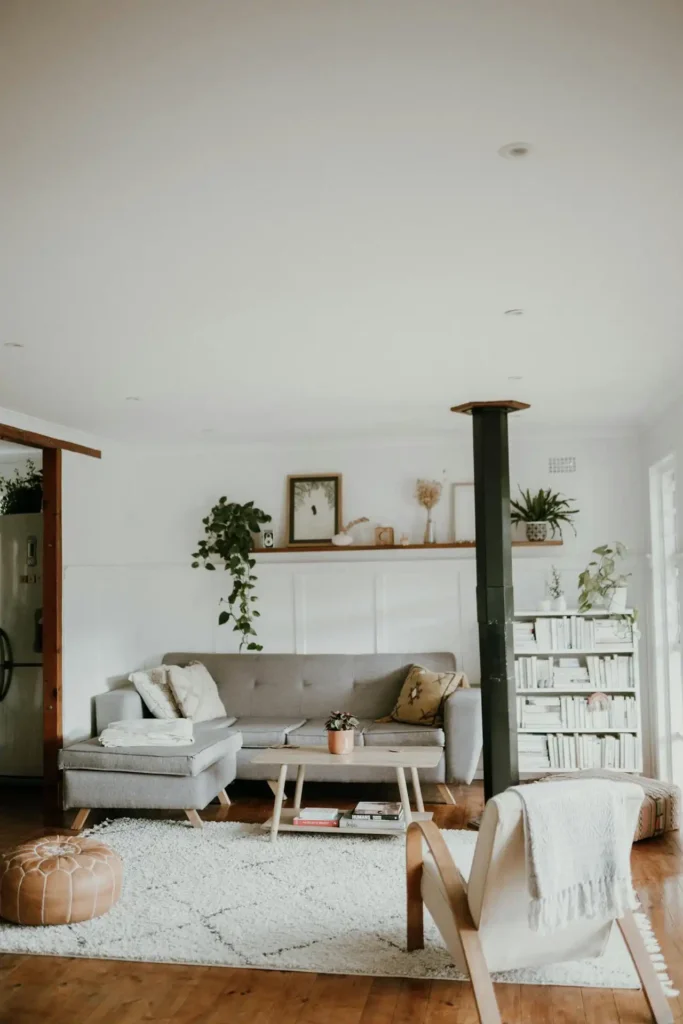
Your lifestyle and seasonal preferences influence optimal rug sizing choices. Think about how you actually use your spaces throughout the year.
Families with young children benefit from larger, washable rugs that define play areas and provide safe, soft surfaces.
Size up to accommodate growing needs and changing furniture arrangements. Seasonal decorating preferences might influence your rug choices.
Pet owners should consider rug sizes that allow for easy cleaning and maintenance. Slightly smaller rugs that fit in standard washing machines often prove more practical than oversized options.
If you like changing your space’s look regularly, choose neutral-sized rugs that work with various seasonal decorating schemes.
Consider your entertaining style when sizing dining and living room rugs. Frequent hosts might prefer larger rugs that accommodate expanded seating arrangements for gatherings.
Room Shape and Architecture Impact
Unusual room shapes require modified approaches to rug sizing. Standard sizing rules need adjustment for unique architectural features and room proportions.
Long, narrow rooms benefit from proportionally longer rugs that emphasize the room’s length rather than fighting against it.
Choose rectangular rugs that complement rather than contrast with the room’s natural proportions.
Square rooms work well with square or round rugs that echo the room’s shape. This repetition creates harmony and emphasizes the room’s balanced proportions.
Rooms with bay windows or alcoves need custom sizing approaches. Consider how architectural features affect furniture placement and adjust rug sizes accordingly.
Open floor plans require careful rug sizing to define separate functional areas without creating visual barriers between spaces.
Conclusion
Choose rug sizes that complement your room’s scale, furniture arrangement, and lifestyle needs.
Proper sizing transforms spaces from good to exceptional with thoughtful planning and measurement.

